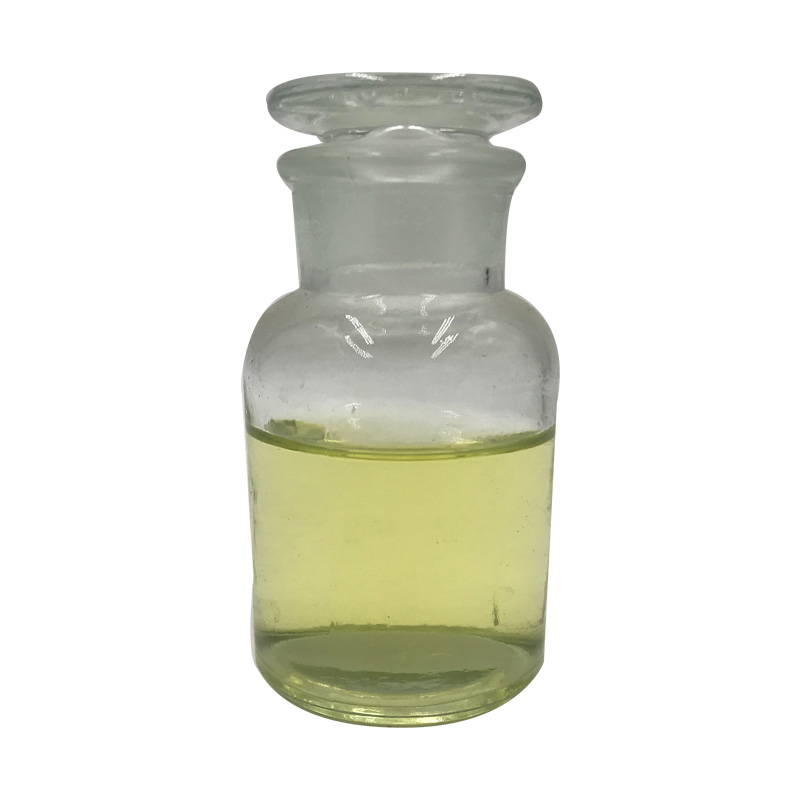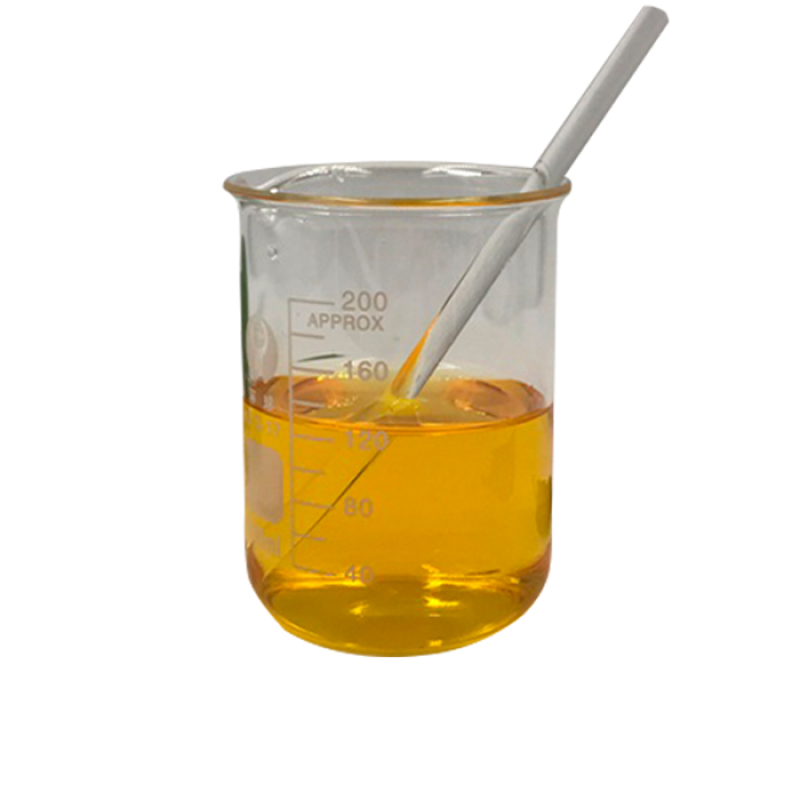Products Description of 2-Aminobenzotrifluoride CAS#88-17-5O-aminotrifluorotoluene is a colorless or light yellow transparent liquid with a relative density of 1.282, a melting point of 34-35°C, and a boiling point of 174-175°C. It is slightly soluble in water and easily soluble in organic solvents such as alcohol and ether. It is the most popular chemical product in recent years.
Contact Now
Products Description of 3,4-Dibromothiophene CAS#3141-26-23,4-Dibromothiophenol is a colorless to pale yellow liquid with a boiling point of 221-222°C and a melting point of 4-5°C.3,4-Dibromothiophene Chemical PropertiesMelting point 4-5 °C (lit.)Boiling point 221-222 °C (lit.)density 2.188 g/mL at 25 °C (lit.)refractive index n20/D 1.640(lit.)Fp >230 °Fstorage temp. Keep in dark place,Sealed in dry,Room Temperatureform Liquidcolor Clear colorless to yellowSpecific Gravity2.188BRN 107642InChIKeyVGKLVWTVCUDISO-UHFFFAOYSA-NCAS DataBa
Contact Now
Products Description of 5-Nitrosalicylic acid CAS#96-97-95-Nitrosalicylic acid is a chemical substance with the chemical formula C7H5NO5 and a molecular weight of 183.12.5-Nitrosalicylic acid Chemical PropertiesMelting point 228-230 °C(lit.)Boiling point 316.77°C (rough estimate)density 1,65 g/cm3vapor pressure 0Pa at 25℃refractive index 1.6280 (estimate)storage temp. no restrictions.solubility water: soluble1g in 1475ml(lit.)form LiquidpkapK1:2.12 (25°C)color Clear yellow-beige to orange-brownWater Solubility Soluble in water 1g/1475
Contact Now
Products Description of Styrenated phenol CAS#61788-44-1Light yellow to amber viscous liquid.
Contact Now
Product Description:We are proud to present our top-grade Dimethylacetamide (DMAC), scientifically known as N,N-dimethylacetamide or N,N-dimethyl acetamide, with the CAS No. 127-19-5.
Contact Now
Products Description of DMI CAS#80-73-91,3-dimethyl-2-imidazolinone, also known as dimethylethylene urea, referred to as 1,3-dimethyl-2-imidazolinone, is a polar solvent with a high boiling point, Chemicalbook, It has high flash point, low melting point, extremely low toxicity, extremely low pollution and strong solubility.
Contact Now
Products Description of Sodium gualenate CAS#6223-35-4Sodium azulene sulfonate is unstable and will decompose under light, air oxidation and high temperature, and it is easy to remove the sulfonic acid group.
Contact Now
SCANDIUM CHLORIDE CAS#10361-84-9Overview:Scandium Chloride, with the chemical formula ScCl3 and CAS number 10361-84-9, is a significant industrial chemical known for its unique properties and wide range of applications.
Contact Now
Products Description of Decyl glucoside CAS#68515-73-1Decyl glucoside is a new type of nonionic surfactant alkyl polyglycoside (APG).
Contact Now
Products Description of Sodium hexametaphosphateCAS#10124-56-8This product is a white crystalline powder with a specific gravity of 2.484 (20°C). It is easily soluble in water but insoluble in organic solvents and has a strong hygroscopic function.
Contact Now
Products Description of SODIUM TRISILICATE CAS#13870-30-9Sodium silicate is a water-soluble silicate, which can be divided into three forms: solid, liquid, and water-quenched. In theory, this type of substance is called "colloid". Industrial solid sodium silicate is a colorless, slightly light blue, turquoise, sky blue or yellow-green transparent or translucent glass block. When the impurity content is very low, the glassy anhydrous solid sodium silicate is a colorless and transparent glass body, and pure solid sodium cinnamate is a colorless and transparent solid.
Contact Now
Products Description of Sodium alginate CAS#9005-38-3Sodium alginate (CHONa), mainly composed of the sodium salt of alginate, is a polysaccharide biopolymer with many characteristics such as wide source, non-toxic, easy to degrade, and easy biocompatibility. Therefore, it has great application value in various industries such as medicine, food, packaging, textile industry, and biomaterials.Sodium alginate Chemical PropertiesMelting point 99 °Cdensity 1.0 g/cm3(Temp: 25 °C)FEMA 2014 | ALGIN (LAMINARIA SPP.
Contact Now
Products Description of CALCIUM TITANATE CAS#12049-50-2Calcium titanate is an inorganic substance with the chemical formula CaTiO3. It belongs to the cubic crystal system and is a basic inorganic dielectric material with excellent dielectric, temperature, mechanical and optical properties.
Contact Now
Sodium carbonate CAS#497-19-8Overview:Sodium Carbonate, with the chemical formula Na2CO3 and CAS number 497-19-8, is a widely recognized chemical compound known for its diverse applications across various industries.
Contact Now
Dimethyl carbonate CAS#616-38-6Dimethyl carbonate is quickly referred to as DMC. At room temperature, it is a colorless and obvious liquid with a pungent smell with a relative density (D204) of 1.0694, a melting factor of four °C, boiling factor of 90.3 °C, the flash factor being 21.7 °C (opening) and being 16.7 °C (closed ) and the refractive index (nd20) being 1.3687.
Contact Now
Products Description of Diethylenetriaminepenta(methylene-phosphonic acid) CAS#15827-60-8DTPMPA is used as a scale inhibitor for circulating cooling water and boiler water in water treatment. It is particularly suitable for alkaline circulating cooling water as a scale inhibitor without pH adjustment. It can also be used as a scale inhibitor for oil field injection water, cooling water and boiler water containing high barium carbonate. When this product is used alone in a compound agent, there is no need to add a dispersant, and the amount of dirt deposition is still very small.
Contact Now
Products Description of 2,4-Difluoro-alpha-(1H-1,2,4-triazolyl)acetophenone CAS#86404-63-9Pharmaceutical Chemical Intermediates2,4-Difluoro-alpha-(1H-1,2,4-triazolyl)acetophenone Chemical PropertiesMelting point 103-107 °C(lit.)Boiling point 388.0±52.0 °C(Predicted)density 1.39±0.1 g/cm3(Predicted)storage temp. 2-8°Csolubility Chloroform (Slightly), Methanol (Slightly)form Solidpka2.05±0.10(Predicted)color White to pale brownCAS DataBase Reference86404-63-9(CAS DataBase Reference)Safety InformationSafety Statements 24/25WGK Germany 3HS Cod
Contact Now
Products Description of Piperonyl butoxide 95% CAS#51-03-6Synergyl ether can improve the insecticidal activity of pyrethrins and various pyrethroids, rotenone and carbamate insecticides. It can also improve the insecticidal activity of fenitrothion, dichlorvos, chlordane, triclofenac and atrazine. etc. have a synergistic effect and can improve the stability of pyrethrum extract. When house flies are used as the control object, this product has a higher synergistic effect on permethrin than octachlorodipropyl ether; however, it cannot synergize cypermethrin in knocking down house flies.
Contact Now
Products Description of Bitertanol CAS#55179-31-2The pure product is a colorless crystalline solid. m.p. 125~129℃ (diastereomer A is 136.7℃, B is 145.2℃, and the low eutectic of A and B is 118℃). The vapor pressure at 20℃ is <1.0×10-3Pa [A is 3.8×10-3Pa, B is 3.2×10-3Pa (100℃)]. Solubility at 20℃: dichloromethane 100-200g/L (A is 200-500g/L, B is 50-100g/L), isopropanol 30-100g/L [20-50g (A or B)/L], toluene 10-30g/L [A is 10-20g/L, B is 1-2g/L], n-hexane 1-10g/L [≤10g (A or B)/L], water 5mg/L [2.9mg (A)/L, 1.6mg (B)/L]. Partition coefficient 126000 (A), 25000 (B).
Contact Now
Products Description of Sodium 4-amino-1-naphthalenesulfonate CAS#130-13-2White or off-white flaky crystals. Easily soluble in water, soluble in 95% ethanol, insoluble in ether, slightly soluble in concentrated caustic alkali aqueous solution and ethanol solution. It is an important azo pigment intermediate, widely used in the synthesis of direct dyes and reactive dyes.
Contact Now
Nicotinic Acid CAS# 59-67-6 Vitamin B3Nicotinic Acid (Nicotinic Acid, also known as Vitamin B₃, CAS number 59-67-6, is extremely important in human metabolism, medicine and industry. Its molecular formula is \(C_6H_5NO_2\) and its molecular weight is 123.11. Chemical name pyridine-3-carboxylic acid, belongs to the pyridine derivatives. It is one of the 13 essential vitamins in the human body and is involved in many important metabolic processes in the body.
Contact Now
H3PO4 CAS#7664-38-2Welcome to our detailed product page for Phosphoric Acid, also known as Orthophosphoric Acid, with the chemical formula H3PO4 and registration number CAS#7664-38-2. This industrial grade acid is the cornerstone of various industries, providing a range of applications from agriculture to food processing.
Contact Now
Product Overview: Industrial-Grade Acetic AcidIntroducing our high-quality Acetic acid mass CAS#64-19-7, a versatile chemical solution designed to meet the needs of manufacturers and industrial users worldwide. Known for its effective properties and stable quality, this product serves as an essential building block across various applications in numerous industries.Pure Acetic Acid:Our Pure Acetic Acid, with the chemical formula CH3COOH, is meticulously produced to ensure the highest level of purity.
Contact Now
Products Description of Saccharin CAS#81-07-2Pure saccharin is a non-toxic, non-caloric, non-nutritious sweetener that is not absorbed by the human body. Taking advantage of its sweet taste, it is used as a food additive to replace sugar. As a food additive, saccharin has no nutritional value to the human body except that it causes a sweet feeling in the taste buds and the sweetness of the taste can meet the requirements of consumers.
Contact Now



































